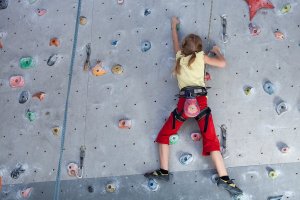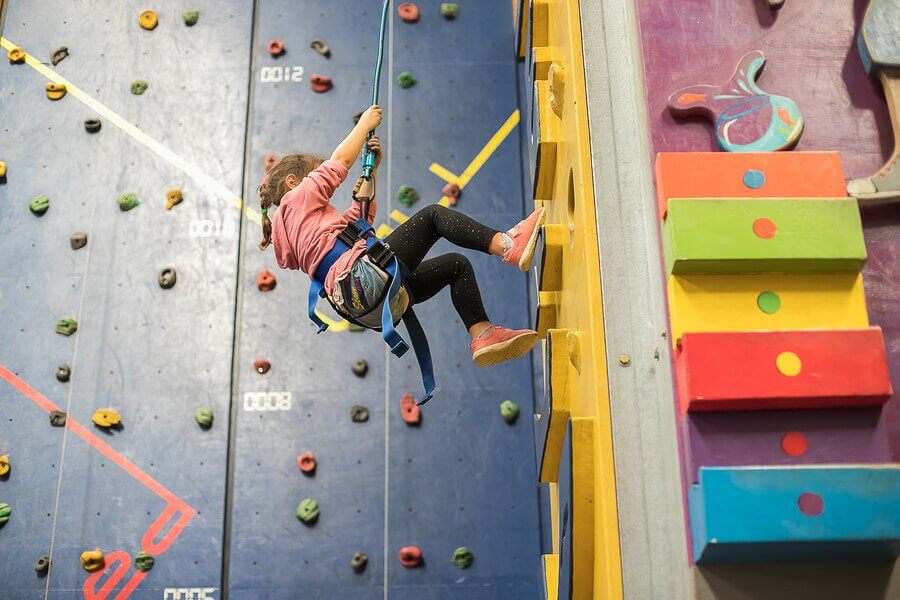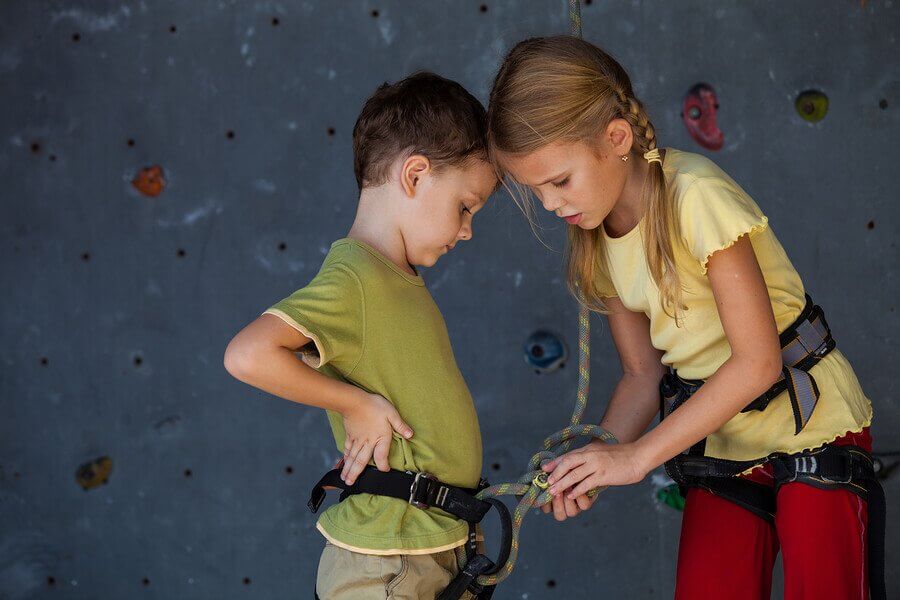Wall Climbing for Children: A Parent's Guide

Wall climbing for children is one of the most complete sports when it comes to the development of resistance, coordination and physical strength.
Given that it encourages participants to reach new goals, it’s also an activity that promotes a spirit of self-improvement and teamwork
Wall climbing for children: Is it safe?
It’s common for parents to wonder if mountain or wall climbing are safe sports for children. And the answer is yes. Wall climbing for children is safe, and that’s part of what makes it so popular.
Children that practice wall climbing do so under strict supervision of a trained adult. In fact, children are always accompanied by an adult who guides them and teaches them how to use the equipment properly.
At the same time, personnel teach children to concentrate on what they’re doing and have fun in an orderly fashion.
Of course, since this is an activity for children, learning is based on games. The best thing about this sport is that it can be played by the whole family. Parents are welcome and can join in on the fun whenever they want.
Children as young as 4 years old can sign up for wall climbing, although some centers may have different regulations. For example, some wall climbing gyms only accept children ages 8 and up.

Climbing games
The objective of wall climbing for children is to teach them the sport in a way that’s fun for them. There are different ways in which participants can develop their resistance, strength and overall potential to the max… All while playing games and having fun with their friends.
Among the varieties and ideas that instructors use to make wall climbing fun are the following:
Follow the leader
This is just one of the many types of activities that can make wall climbing fun for children. There is a wide variety of “follow the leader” type games that kids can play.
For example, the first player that reaches a certain objective sets the pace for the rest of the group. Everyone else must climb the same path in order to win.
Blind climbing
Here, children climb in the dark, or while wearing blindfolds. They must reach their objectives based on their intuition and, of course, their sense of touch.
Seeing eye dog
This is a variant of the activity mentioned above. The difference lies in that another classmate has to provide spoken instructions on where the climber should step in order to reach the goal. The “seeing eye dog” tells his or her blindfolded partner where to go.
Treasure hunt
Another way to make wall climbing fun for kids is a goofy sort of treasure hunt game. An instructor places different fun and silly objects in various spots on the wall.
For example, a clown nose, a hat, a goofy tie, etc. If a child passes by one of these spots on the way up the wall, he or she must put the item.
What items are necessary for wall climbing for children?
Wall climbing has always been an athletic activity that requires elements that guarantee safety at all times. When it comes to children, this type of equipment is non-negotiable, along with the constant supervision of at least one trained adult.

Some of the items that are fundamental for every child who takes part in wall climbing are the following:
- Safety helmet. Ideally, each child should have his or her own helmet to assure proper fitting.
- Full-body harness. Continuing with the equipment needed for wall climbing, a full-body harness is a key item for this sport. Children use full-body harnesses so that they don’t fall if they happen to slip.
- Rock climbing shoes. While important, special rock climbing shoes aren’t always a requirement, especially for beginner wall climbers. A good pair of comfortable athletic shoes that meet certain requirements will be sufficient.
- Pulley. In order for wall-climbing to be extra safe for children, it should always involve a pulley. Furthermore, the rope should be kept tense at all times, especially at the beginning of a climb.
Rock climbing for children is a fun and challenging experience. Among its numerous benefits, it will help little ones gain confidence in themselves.
By taking part in these activities, children build up their physical strength and resistance while gradually reaching their goals. As long as safety measures are in place and adult supervision is present, wall climbing is a perfectly safe sport for children.
All cited sources were thoroughly reviewed by our team to ensure their quality, reliability, currency, and validity. The bibliography of this article was considered reliable and of academic or scientific accuracy.
- Gull, C., Goldenstein, S. L., & Rosengarten, T. (2018). Benefits and Risks of Tree Climbing on Child Development and Resiliency. International Journal of Early Childhood Environmental Education, 5(2), 10-29. https://eric.ed.gov/?id=EJ1180021
- Mazzoni, E. R., Purves, P. L., Southward, J., Rhodes, R. E., & Temple, V. A. (2009). Effect of indoor wall climbing on self-efficacy and self-perceptions of children with special needs. Adapted Physical Activity Quarterly, 26(3), 259-273. https://journals.humankinetics.com/view/journals/apaq/26/3/article-p259.xml
- Hyder, M. A. (1999). Have your students climbing the walls: The growth of indoor climbing. Journal of Physical Education, Recreation & Dance, 70(9), 32-39. https://shapeamerica.tandfonline.com/doi/pdf/10.1080/07303084.1999.10605966
This text is provided for informational purposes only and does not replace consultation with a professional. If in doubt, consult your specialist.








